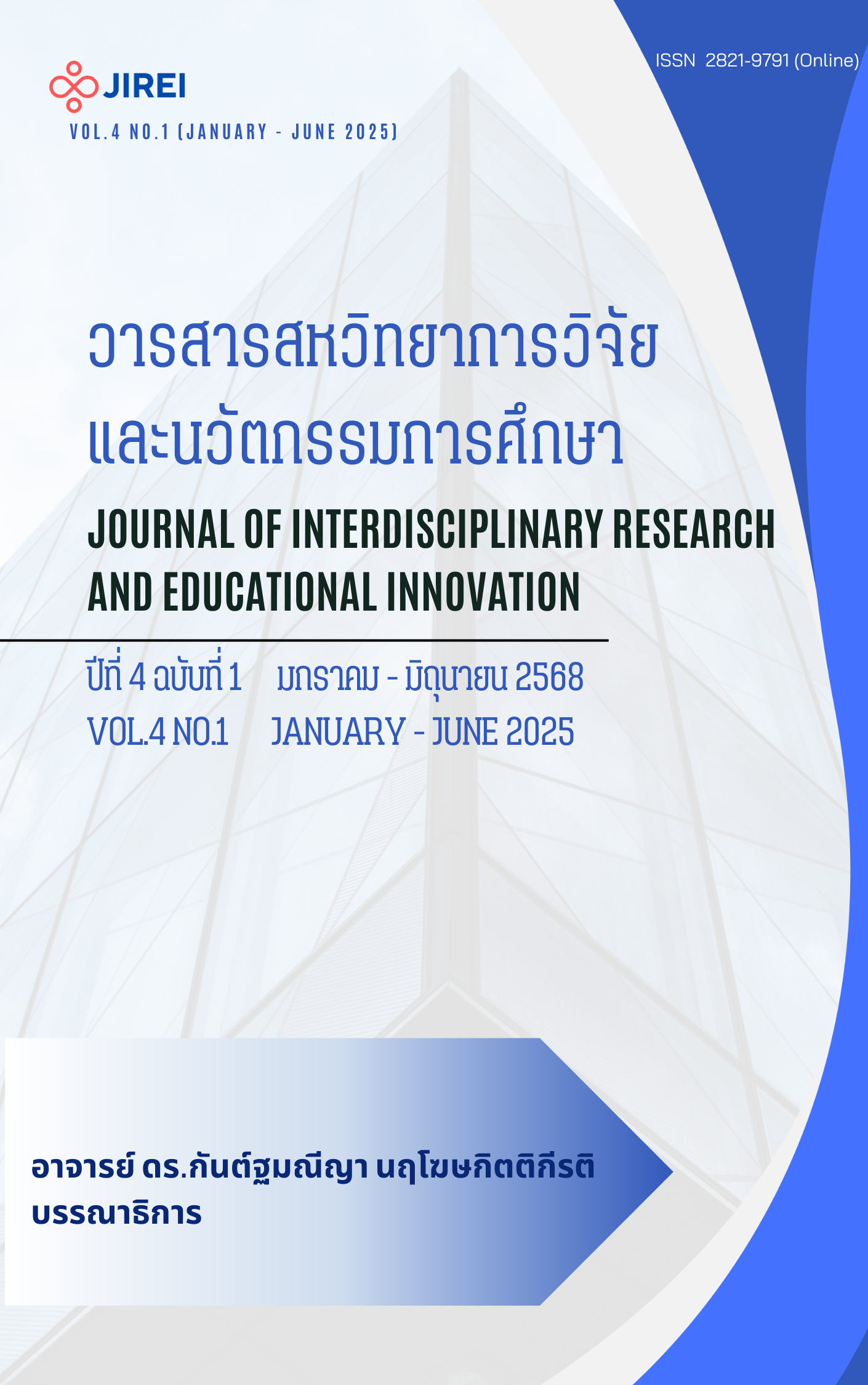วิทยาศาสตร์ในชีวิตประจำวัน: การเรียนรู้ที่มีความหมายผ่านบริบทจริง
คำสำคัญ:
วิทยาศาสตร์ในชีวิตประจำวัน, การเรียนรู้เชิงบริบท, ความฉลาดรู้ทางวิทยาศาสตร์, สมรรถนะผู้เรียนบทคัดย่อ
บทความวิชาการนี้มีวัตถุประสงค์เพื่อเสนอแนวทางการจัดการเรียนรู้วิทยาศาสตร์โดยใช้บริบทชีวิตประจำวันของผู้เรียนเป็นจุดเริ่มต้น เพื่อส่งเสริมการเรียนรู้ที่มีความหมายและสอดคล้องกับการพัฒนาสมรรถนะสำคัญในศตวรรษที่ 21 โดยอิงจากกรอบแนวคิดของทฤษฎีโครงสร้างนิยม (Constructivism) การเรียนรู้เชิงบริบท (Context-Based Learning) และความฉลาดรู้ทางวิทยาศาสตร์ (Scientific Literacy) บทความได้นำเสนอแนวคิดทฤษฎี พร้อมยกตัวอย่างกิจกรรมและกรณีศึกษาจริงที่สะท้อนถึงการนำบริบทในชีวิตประจำวันมาใช้ในการออกแบบการเรียนรู้ เช่น การวิเคราะห์คุณภาพน้ำดื่ม หรือการสำรวจสารเคมีในผลิตภัณฑ์ในบ้าน นอกจากนี้ยังเสนอข้อแนะนำในการจัดการเรียนรู้ 5 ด้าน ได้แก่ การออกแบบคำถามจากชีวิตจริง การพัฒนาสื่อบริบท การสนับสนุนเชิงระบบ การพัฒนาวิชาชีพครู และการประเมินผลที่สอดคล้องกับลักษณะกิจกรรมแบบมีความหมาย เพื่อให้การเรียนรู้วิทยาศาสตร์ในชั้นเรียนสามารถเชื่อมโยงกับโลกจริงได้อย่างมีพลัง สร้างผู้เรียนที่สามารถนำวิทยาศาสตร์ไปใช้ในการดำเนินชีวิตได้อย่างรู้เท่าทันและยั่งยืน
เอกสารอ้างอิง
Aikenhead, G. S. (2006). Science education for everyday life: Evidence-based practice. Teachers College Press.
Beane, J. A. (1997). Curriculum integration: Designing the core of democratic education. Teachers College Press.
Bennett, J., Lubben, F., & Hogarth, S. (2007). Bringing science to life: A synthesis of the research evidence on the effects of context‐based and STS approaches to science teaching. Science Education, 91(3), 347–370.
Black, P., & Wiliam, D. (2009). Developing the theory of formative assessment. Educational Assessment, Evaluation and Accountability, 21(1), 5–31.
Bybee, R. W. (1997). Achieving scientific literacy: From purposes to practices. Heinemann.
Dori, Y. J., & Holenstein, M. (2004). How to learn what you see: Comparing observation skills of higher and lower achievers in a multimedia case-based learning environment. Journal of Science Education and Technology, 13(3), 353–364. https://doi.org/10.1023/B:JOST.0000045466.92603.95
Driver, R., Asoko, H., Leach, J., Mortimer, E., & Scott, P. (1994). Constructing scientific knowledge in the classroom. Educational Researcher, 23(7), 5–12. https://doi.org/10.3102/0013189X023007005
Gilbert, J. K. (2006). On the nature of “context” in chemical education. International Journal of Science Education, 28(9), 957–976.
Hofstein, A., & Lunetta, V. N. (2004). The laboratory in science education: Foundations for the twenty‐first century. Science Education, 88(1), 28–54.
Jacobs, H. H. (1989). Interdisciplinary curriculum: Design and implementation. Association for Supervision and Curriculum Development (ASCD).
OECD. (2018). PISA 2018 assessment and analytical framework: Mathematics, reading, science and financial literacy. OECD Publishing. https://doi.org/10.1787/b25efab8-en
Piaget, J. (1977). The development of thought: Equilibration of cognitive structures (A. Rosin, Trans.). Viking Press.
Vygotsky, L. S. (1978). Mind in society: The development of higher psychological processes. Harvard University Press.
สำนักงานคณะกรรมการการศึกษาขั้นพื้นฐาน กระทรวงศึกษาธิการ. (2564). โครงการพัฒนาหลักสูตรการศึกษาขั้นพื้นฐาน พุทธศักราช .... (หลักสูตรฐานสมรรถนะ). https://cbethailand.com/





